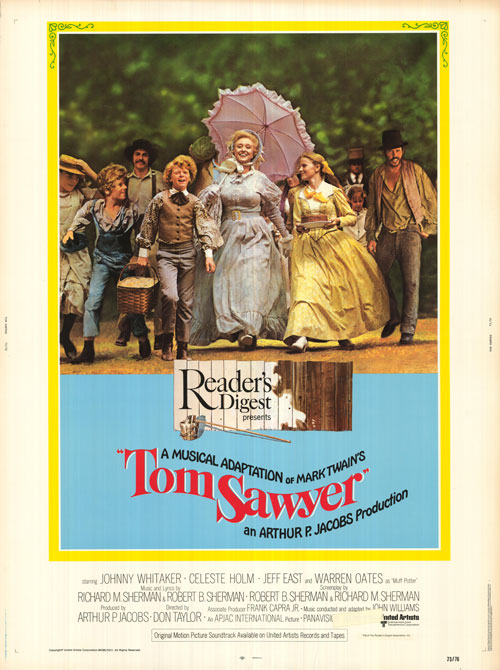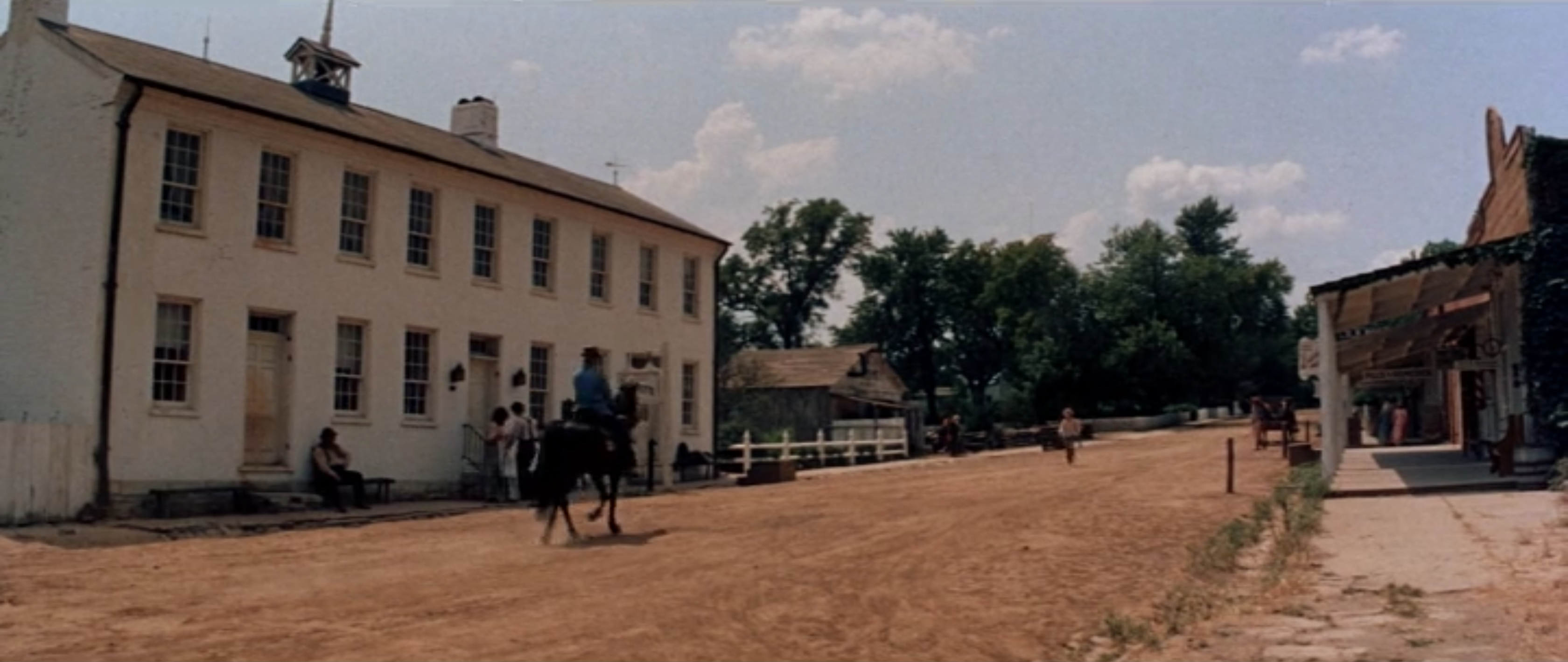The Furniture: Tom Sawyer's Stovepipe and Steamboat Nostalgia
 Monday, April 24, 2017 at 12:00PM
Monday, April 24, 2017 at 12:00PM "The Furniture" is our weekly series on Production Design. You can click on the images to see them in magnified detail. Here's Daniel Walber...
 [PART ONE OF OUR CELESTE HOLM CENTENNIAL SERIES]
[PART ONE OF OUR CELESTE HOLM CENTENNIAL SERIES]
On paper, 1973’s Tom Sawyer might be the oddest project of Celeste Holm’s entire career. It was her first big screen appearance in six years. She’d been splitting her time between TV and theater, making guest appearances on shows like The Fugitive and leading the national tour of Mame. And while it’s not unexpected that her return would come via an independent production, the company in question may surprise you.
Tom Sawyer was made by Reader’s Digest, during the company’s six year foray into the industry. This was their first feature, the accompanying risk of which might explain the bizarre product placement. Child star Johnny Whitaker is actually credited as appearing “through the courtesy of Elder Manufacturing Company, manufacturers of Tom Sawyer wearing apparel for boys.” Still selling uniforms today, their signature line of boys’ outfits appears not to have changed in a century.
For our purposes, however, the notable thing is the location. Tom Sawyer and its sequel are the only films based on Mark Twain’s beloved characters to be shot in Missouri after the silent era...
And even then, the two 1970s films weren't shot on the Mississippi River. In 1917, when Tom was played by Mary Pickford’s younger brother, Twain’s riverside hometown of Hannibal still looked enough like the 1870s. By the 1970s, things were too developed. And so the film was shot in Arrow Rock and Lupus, 100 miles away on the banks of the Missouri.
It was a great decision. Production designer Philip M. Jefferies and set decorator Robert De Vestel, Oscar nominees for the film, barely had to build any new sets. The local buildings were a perfect fit. The block picture above really only needed some 19th century style signage. My favorite of the quaint business is Perry Davis’s Sure Cure Remedies.
The courtroom, meanwhile, remained almost untouched. The space only needed furniture and a few items on the wall, as well as the large heating pipe on the left. And, as you can see in this delightful YouTube video, it seems to be the same today.
Well, they did have to replace one of the windows.
Many of the spaces possess this same quality, plain walls and practical furniture with only the occasional accent. Here’s the school room, old-fashioned desks in precise order and a wood stove in the back. If you look closely on the left wall, though, you’ll see the comically high number of disciplinary switches that the teacher keeps on a rack.
The church has the most prominent wood stove. There’s even a small pile of chopped logs, waiting to be tossed in.
The stove is accurate, of course, but it also calls attention to itself. This is an exaggerated 19th century Americana, a slight caricature of useful objects and the lifestyle that they represent. Its appeal is likely why Elder Manufacturing keeps making the same clothes. It may even be why the Arrow Rock courtroom and church have been kept so similar today, four decades since this particular iteration of nostalgia.
It’s certainly why steamboats have kept their appeal. The Julia Belle Swain, which nearly steals the show, is as much a replica as the film around it. Though its engines were built in 1915, the boat as it appears in Tom Sawyer was not designed until 1971. After the film it was used for commercial river cruises for many years, even winning the Great Steamboat Race in 1976.
It’s a beautiful boat. It is also, like so many symbols of the American past, a recreation of a dream. The world of Tom Sawyer is only a partial and obscured vision of the period, as is pretty self-evident in the representation of Injun Joe (Kunu Hank). The lily-white earnestness, unintentionally underlined by the ridiculous musical numbers, has not aged well. But it remains quite the object of study, a carefully designed bauble of performed nationhood.
By the way, the Julia Belle Swain is currently under repairs in La Crosse, Wisconsin. It is expected to re-launch this year.












Reader Comments